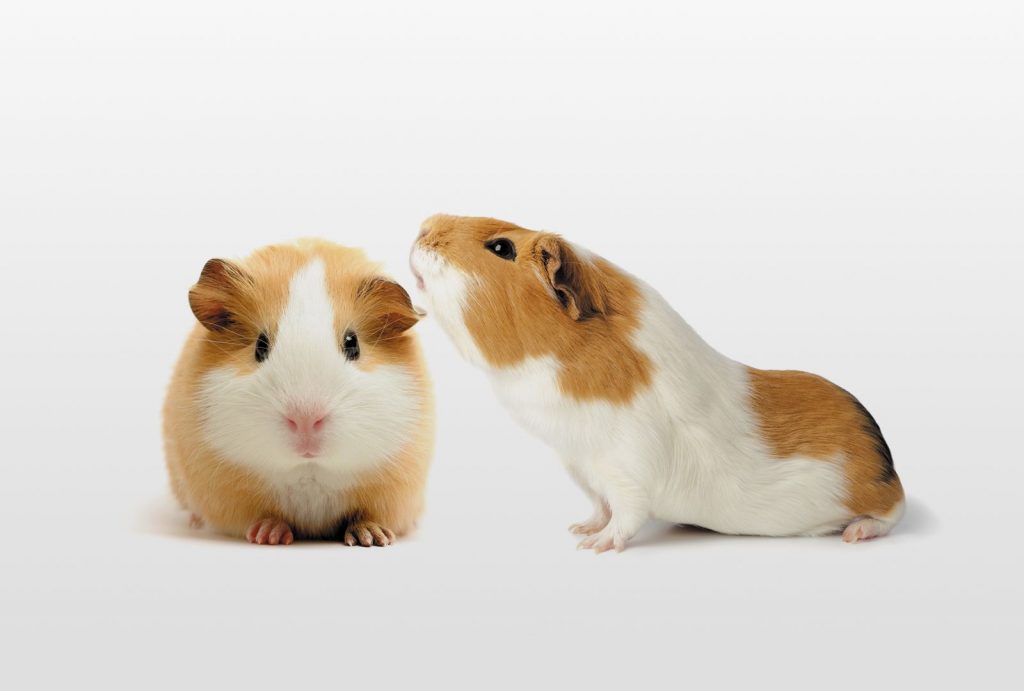Small rodent-sized pets, otherwise affectionately known as pocket pets, include mice, rats, gerbils, hamsters and Guinea pigs. These little animals are not expensive to maintain and can be an entertaining pet, especially if space is limited. The basic requirements of most pocket pet species are similar and the life expectancy for most species is in the two to four year range; except for the Guinea pig which has a life expectancy of eight years.
Pocket pets should be kept in cages specially designed for their needs or aquariums with a good wire top. Openings in the wire should be small enough to prevent escape and not too large to allow a foot to be caught or twisted. Surfaces should be metal, smooth plastic or glass to allow proper cleaning. Cleaning should be done weekly with tunnels and small corners scrubbed with a bottlebrush. Chlorhexidine based cleaners are best. Many products make good bedding but avoid cedar shavings which can cause respiratory and skin problems, and never use straw.
Feed a commercial diet appropriate for your pet. Buy in small quantities and store food in sealed dark containers to ensure freshness, and that vitamin content is not diminished by exposure to light and air. Small amounts of fresh fruits and vegetables should be provided daily. Avoid abrupt changes in diet. Avoid iceberg lettuce, fruits with pits; and outdoor grasses or dandelions possibly exposed to chemicals. Clean food dishes daily and use dishes that cannot be tipped. Use an inverted water bottle and change the water daily. Monitor your pet’s stools and urine for amount or change in appearance. This could be your first clue if a problem is developing.
Exercise is important, especially to Guinea pigs. Buy the largest cage you can and add the appropriate sized wheel for hamsters and gerbils. Exercise balls are fun but can be dangerous; I once saw a Guinea pig left in a ball in direct sunlight dead of hyperthermia. Gentle handling allows you to monitor your pet for illness and reduces stress as your pet becomes comfortable with you.
A nest box is nice so long as condensation doesn’t form inside and appropriate bedding allows air circulation. Toys make a more stimulating environment. Paper towel rolls, wooden spools, and most commercial products are great.
A hamster is probably the favorite pocket pet of the pet industry but it is a solitary territorial creature. Only get one! Guinea pigs, my personal favorite, need a much larger cage but it can be uncovered. Pigs can’t climb, and they are social animals, so get two and you can have them spayed or neutered. Guinea pigs are prone to scurvy, a vitamin C deficiency, and they must be given a daily source of fresh fruit and vegetables. Guinea pigs need fresh hay, preferably Timothy hay, to aid digestion. I really like rats and they make wonderful smart pets. I had pet white rats at university, but unfortunately, it is illegal to own a pet rat in Alberta.
Obviously there is a bit to learn if you get one of these “pets in your pocket” so buy a book or get on the internet and learn about your prospective choices before purchasing. Our local Calgary Humane Society has pocket pets for adoption. Many veterinarians now treat these small exotic pets routinely as our knowledge of their care has increased exponentially in recent years.









